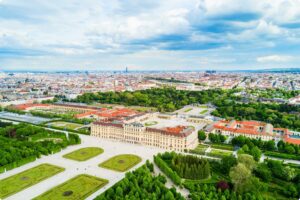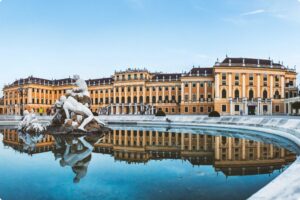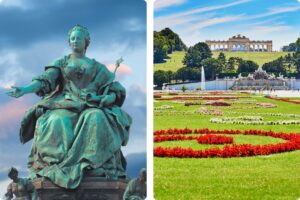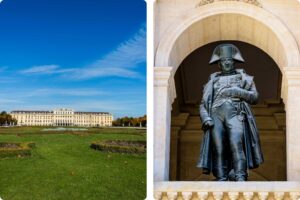Schönbrunn Palace is one of Europe’s most famous historical landmarks. Listed as a UNESCO World Heritage List this palace has a rich history that spans centuries. In this blog, I will take you through the fascinating story of Schönbrunn Palace, from its humble beginnings to its status as a cultural symbol of Austria.
The Origins of Schönbrunn Palace
Schönbrunn’s history dates back to the 16th century when it began as a simple hunting lodge. In 1559, Emperor Maximilian II acquired the estate, using it as a place for relaxation and hunting. The grounds were filled with exotic animals, and the area served as a private game reserve. The name “Schönbrunn,” meaning “beautiful spring,” was coined during this period, referencing a natural spring discovered on the property.
In the late 17th century, Emperor Leopold I decided to build a grand palace that would rival the grandeur of Versailles. Architect Johann Bernhard Fischer von Erlach designed the palace in the Baroque style. Although the palace was never completed as originally planned due to financial and political constraints, Schönbrunn continued to grow in importance, becoming a key residence of the Habsburgs.
Maria Theresa and the Golden Age of Schönbrunn
Schönbrunn’s true flowering came under Empress Maria Theresa in the 18th century. She made the palace her summer residence and transformed it into a royal retreat. She renovated the building in the Rococo style, adding ornate gardens, magnificent halls, and intricate decorations. Schönbrunn became the center of European art, culture, and politics, with artists and diplomats visiting from across the continent. Famous composers like Mozart even performed here.
Maria Theresa, a mother of 16 children, used Schönbrunn as a family home. Her children, including Marie Antoinette (who later became Queen of France), grew up at the palace. This period became known as the Golden Age of Schönbrunn, as the palace was the heart of Habsburg royal life.
The French Occupation and Napoleon
Schönbrunn Palace, though a symbol of imperial splendor, also witnessed times of conflict. During the Napoleonic Wars, the palace was occupied twice by French forces. Napoleon Bonaparte himself resided there, and his son spent his childhood at Schönbrunn under the supervision of the Austrian emperor.
Emperor Franz Joseph I and Sissi
In the 19th century, Emperor Franz Joseph I was born at Schönbrunn Palace in 1830. He would go on to rule for 68 years and became one of Austria’s most beloved emperors. Alongside his wife, Empress Elisabeth (Sissi), he spent many summers at Schönbrunn, and the palace became a symbol of their reign.
The Gardens of Schönbrunn
Schönbrunn is not only famous for its palace but also for its stunning gardens. Designed in the Baroque style, the gardens feature perfectly maintained flowers, fountains, and statues. One of the most popular spots within the gardens is the Gloriette, a hilltop structure offering a panoramic view of the palace and the city of Vienna.
Schönbrunn Today
Today, Schönbrunn Palace is one of Austria’s most visited tourist attractions, drawing millions of visitors each year. Guests can explore the beautifully preserved rooms and stroll through the expansive gardens. As a symbol of Austria’s royal heritage, Schönbrunn continues to captivate visitors from around the world.
Discover More About Vienna
Would you like to know more about Wenen and the rich history of this city? Book the SmartWalk Wenen to learn more about the city, the hidden gems and see the city from a different perspective. Walk the tour at your own pace and take breaks whenever you want! Would you like to know the best practical tips for your trip to Austria to be fully prepared? Look at the blog about the tips for your vacation!







